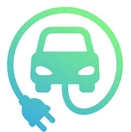The U.S. has been kicking government funding of electric vehicles and supporting infrastructure into high gear lately. From funding chargers to banning Chinese car tech to juicing parts suppliers, the moves have been quite clear. But there’s something important to remember: Federal cash will eventually dry up. And in other countries, we’re seeing what happens to the EV transition when it does.
Welcome back to Critical Materials, your daily roundup for all things EV and automotive tech. Today, we’re chatting about countries considering ditching EV subsidies, Stellantis’ supposed search for a new CEO, and Cruise firing its robotaxis backup (kind of). Let’s jump in.
Government subsidies have always been a polarizing topic. Just ask Tesla CEO Elon Musk, who called for the end of all subsidies across all industries—even those for the EVs that his company sells. He might just get his wish.
There’s growing talk among governments across the globe about ending the subsidies that have been powering the EV industry for years. The chatter comes at a crucial time when EVs have just started to become mainstream, partly thanks to the very tax credit that many want to do away with. But here’s the thing—ending EV subsidies now could mean throwing a considerable wrench into adoption before the cars reach cost-parity to their outgoing ICE siblings.
Here’s what the MIT Technology Review has to say on the matter, starting in Europe:
One of the main reasons traces back to mid-December 2023, when the German government gave less than one week’s notice before ending its subsidy program for electric vehicles. The program had given drivers small grants (up to around €6,000) toward the purchase of new battery-electric and plug-in hybrid cars.
The end of the subsidy program isn’t the only factor contributing to Germany’s EV slowdown, but the abrupt axing certainly had an effect: While many countries across Europe saw steady or growing sales of new EVs in the past year, Germany’s sales fell.
The review points out that Germany isn’t the only country that has officially scraped its credit. Sweden and New Zealand have also done away with their own EV subsidy programs, and—surprise—both countries started to see a slowdown or outright decline in EV sales. Europe’s auto industry is in a fairly apocalyptic place right now, but the lack of people buying electric (especially from their own automakers) is making the entire continent nervous.
Unsurprisingly, the main driver behind the lack of EV adoption comes down to the almighty dollar.
“Cost is the main driver,” confirmed Robbie Orvis, senior director at policy research firm Energy Innovation. And to Orvis’ point, cost parity isn’t there yet, meaning EVs are still significantly more expensive than their gas-powered counterparts. That could change as early as next year. However, it could inadvertently delay mass-market adoption and climate goals if government support is pulled at a crucial time.
In case we forgot, the whole point of subsidies is to help push people away from fossil fuels and towards something that won’t set the planet on fire in a few generations. But there’s also a hidden agenda to ensure that the automotive industry stays competitive.
Governments know that if they don’t push for change and accept a stalemate, the manufacturing sector could suffer. Other countries are more than willing to pick up the slack to gain new market share. We’re seeing it happen with cheaper Chinese EVs threatening automakers in Europe right now. You can’t just fight change with tariffs, so that makes the choice for carmakers simple: innovate or die.
The U.S. doesn’t seem to be at risk—yet. The Biden administration just announced plans to safeguard against a “flood” of EVs in China, in part by banning certain software with links to the country (something that could affect domestic automakers, too). It also announced a new billion-dollar round of funding to help automakers retool for the EV future.
It turns out that new car buyers make their buying decisions based on getting a good deal. Who knew? Naturally, incentivizing buyers also incentivizes automakers. For governments, that means dusting off the old checkbook and spending some taxpayer cash to help prop up the new propulsion tech.
So, is the EV market ready to fly solo? Maybe. But pulling these subsidies too soon can also sabotage many future manufacturing and climate goals. It’s a tough call to say “enough is enough”—and one day, enough will be enough. It might not just be today.

